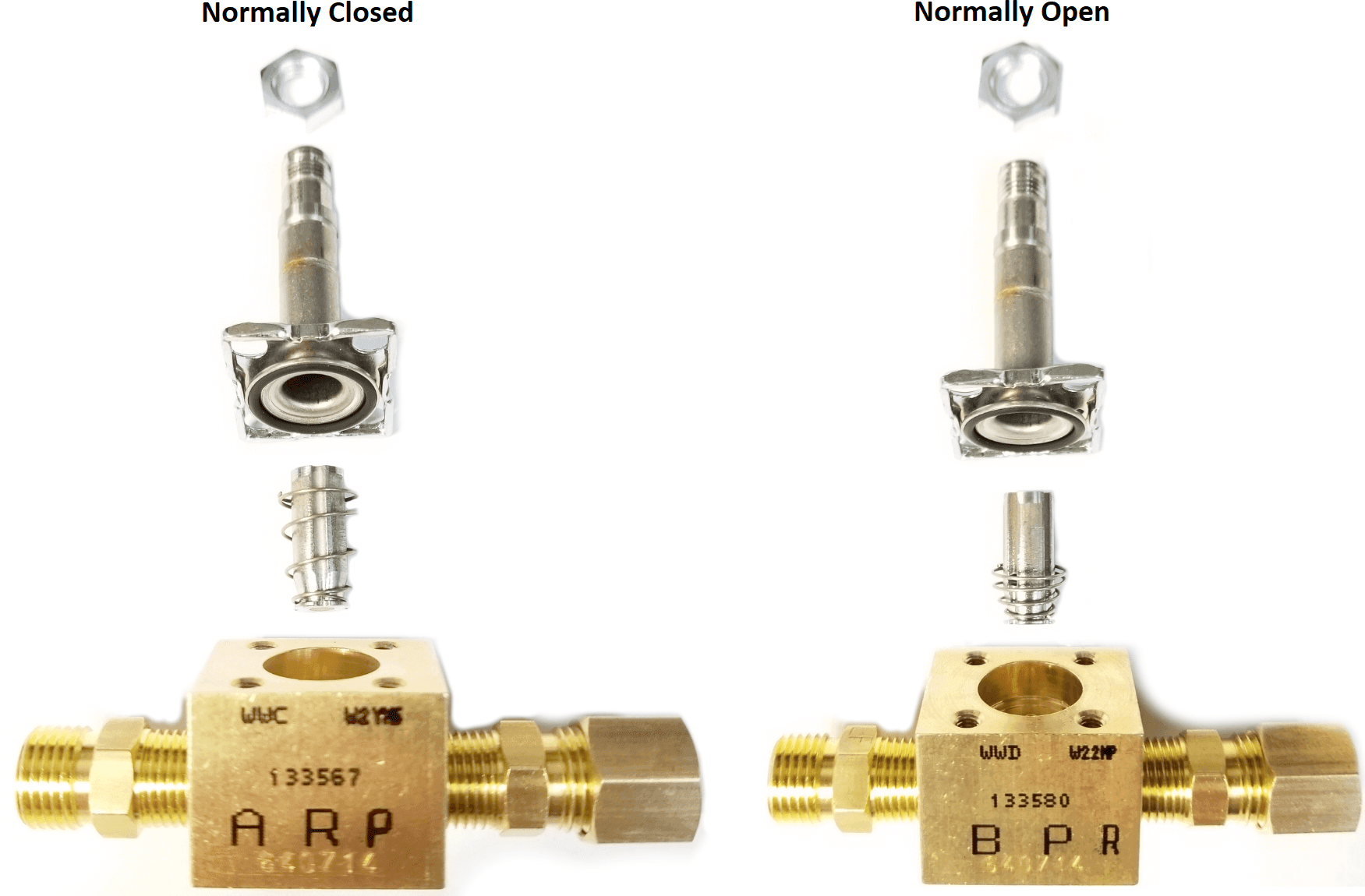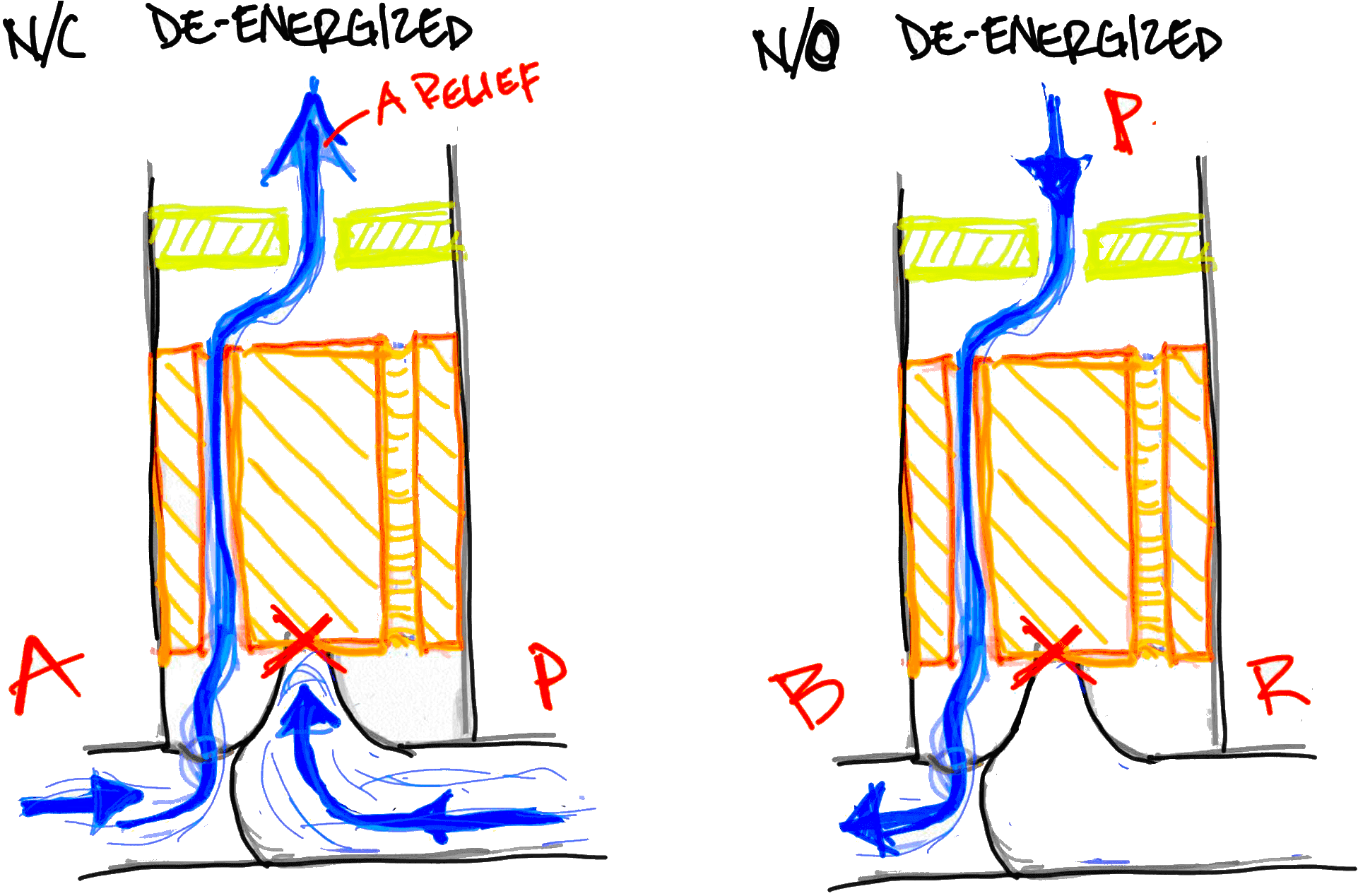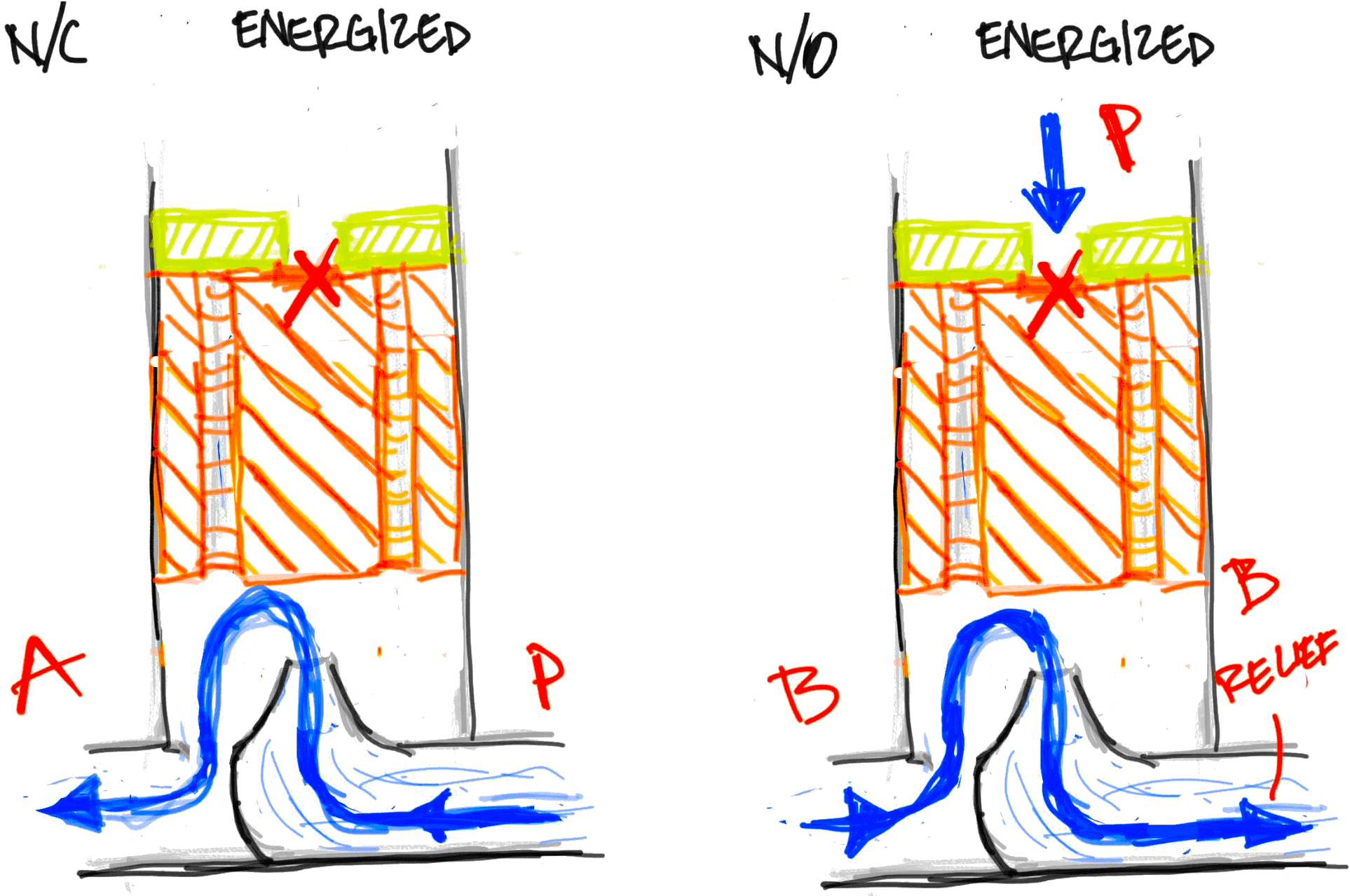Pilot Valves:
These valves are used on many air applications across Milnor products for decades.
Coil voltages may vary, so be careful when replacing valves. Make sure the new valve has the same voltage coil as the old.
Note that the springs on the plungers are different. You cannot plumb a N/C (normally closed) valve as N/O (normally open). The spring change will prevent proper operation.
Normally Closed pilot valves have an A, P and R port. (See the drawings below.)
When a N/C valve is turned off electrically, there should be no air from port A or R. When on, Air flows from P to A.
Note: Air will flow from A to R temporarily when switched from an energized state (on) to a de-energized state (off). This is the purpose of the relief.
Normally Open pilot valves have a B, R and P port. (See the drawings below.)
When a N/O is off electrically, air flows from the P port to the B port. When on, air stops and B exhausts to R.
There should never be a small leak from the exhaust port of any valve. If there is, the valve has a bad seat or trash inside that prevents proper operation. You can check for this leak using a cup of water and putting the exhaust tube in the cup under water. If bubbles blow, then you have a bad valve.
Port assignments for the valve are critical for operation. A N/C pilot with A plumbed to main air pressure will vent air through port R constantly when de-energized, this looks very similar to a "leaking" pilot valve. The two valves we have used on machines are Burkert and Asco.
Normally Closed Port Assignments| Burkert Port | Asco Port | Functionality |
|---|
| P | 2 | Inlet Pressure |
| A | 1 | Device Pressure |
| R | 3 | Relief Port |
Normally Open Port Assignments| Burkert Port | Asco Port | Functionality |
|---|
| P | 3 | Inlet Pressure |
| B | 1 | Device Pressure |
| R | 2 | Relief Port |




